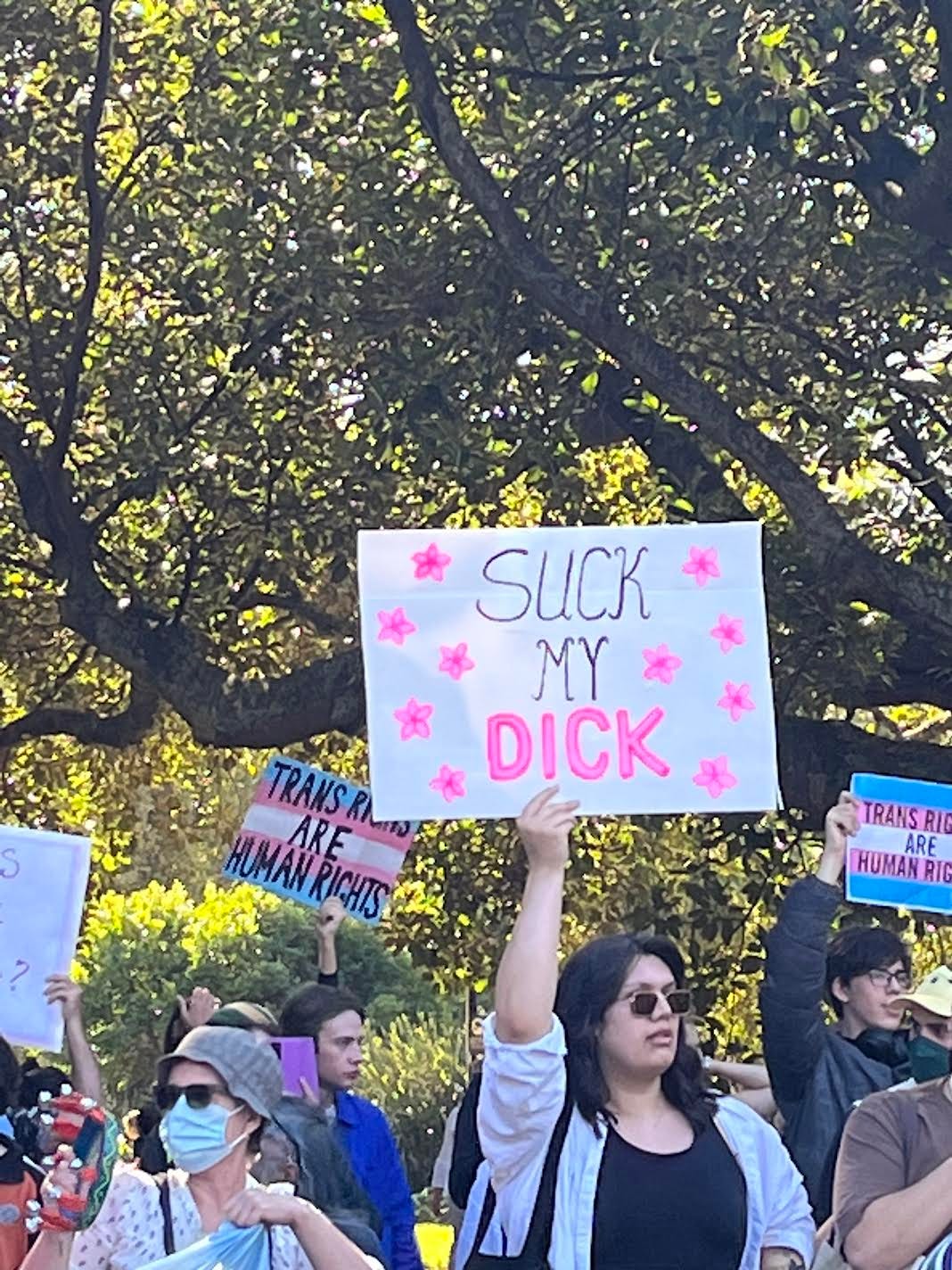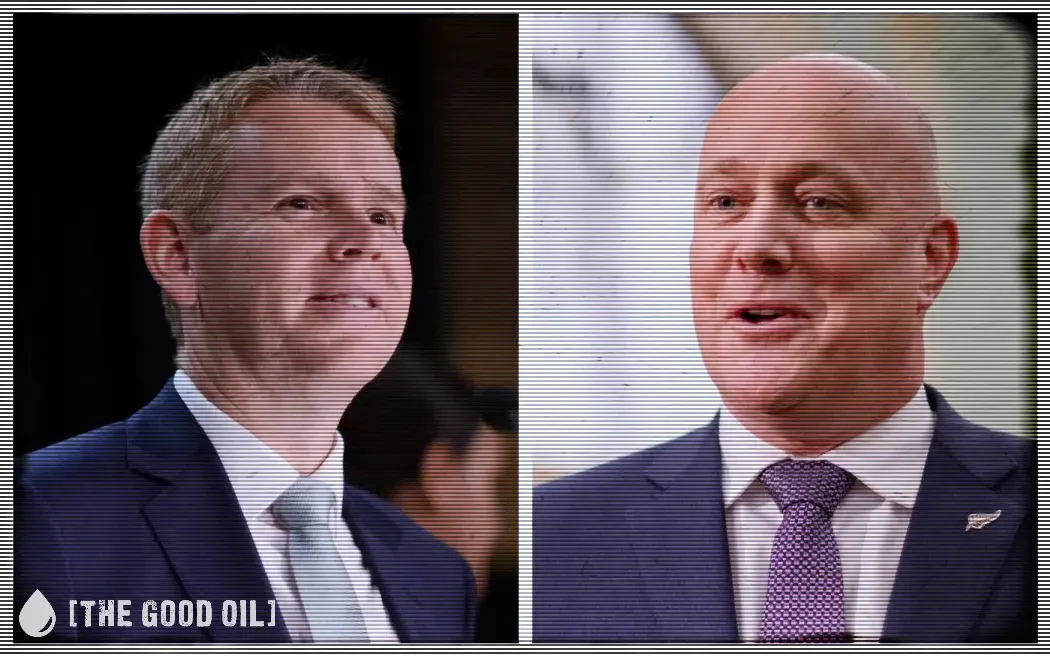Yvonne van Dongen
Veteran NZ journo incredulous gender ideology escaped the lab. Won’t rest until reality makes a comeback.

“I wasn’t concerned for anyone’s safety… they weren’t violent people.”
This was the judgement of Officer D at the Posie Parker event on 23 March, 2023, just minutes before all hell broke loose.
Officer D’s howler is probably my favourite line in the entire 156-page Independent Police Conduct Authority report on the botched Posie Parker operation and other protests released last week.
This astonishingly obtuse observation says a lot about how the police dereliction of duty and subsequent mobbing of 200 women by 2000 TRAs allies was allowed to happen.
There’s more. The timeline and excerpts from the report tell the story. Remember Kellie-Jay Keen-Minshull (aka Posie Parker or KJK) was due to arrive at 11.
The following sequence of events is recorded in the police system:
• At 10am Field Intelligence Officers reported that approximately 20 to 30 protestors had arrived and were setting up by the fountain. Soon after they reported 12 to 15 LWS participants were at the rotunda.
• At 10.17am they reported 25 to 30 protestors were outside the fenced-off area, seven to eight people were inside the fenced-off area for LWS attendees, and four contracted security guards were inside the rotunda.
• At 10.23am they reported there had been “some heated exchanges on the fringes with skin-head types confronting protesters”.
• At 10.39am they reported the crowd was getting larger and soon after the Forward Commander reported “the noise has started”.
• At 10.49am a group of trans allies were reported to be moving towards the rally.
• At 10.53am it was reported that the crowd that had gathered by the fountain was now moving towards the LWS rally. Officers at the event were asked, “Do you sense any rising tension?” A Police Negotiation Team (PNT) officer responded, “No rising tension yet, however Ms B called me in a flap asking me to come to the stage”.
• At 10.55am the Forward Commander reported that the mood of the crowd “appears ok just a lot of noise”.
• At 10.56am a PNT officer reported that Ms B had told them she had a pot thrown at her and “needs Police between them and protestors now”.
• At 11.00am a PNT officer reported that the rotunda was surrounded and “the majority of protestors are making a lot of noise but nothing more”.
A Let Women Speak (LWS) organiser fearing for her safety was described as “being in a flap”. Minutes later a pot was thrown at her. Still the police insist it’s just sturm und drang signifying nothing. In fact, they maintained this fiction right until KJK arrived and the rowdy TRAs allies broke through the metal fence erected by LWS.
Reader, I was there and I’m telling you even blind Billy could see that these were not simply peaceful protestors ‘saying their part’. The noise was excessive and angry, the signs offensive (see above) and the atmosphere febrile.
Given the hysteria that had been whipped up prior to her arrival by politicians, such as the then Minister of Justice Kiri Allan, Prime Minister Chris Hipkins, media darlings like Shaneel Lal and MSM, itself, referring to women wanting to hear Minshull speak as “anti-trans”, it should have come as no surprise to the police that events unfolded as they did. In addition I would like to state that we were not yelling back at the protestors as reported. Why would we? The noise was deafening and we were well outnumbered.
That police should dismiss a woman’s concerns (“in a flap”) in typically sexist language (would they say that about a man?), is an indication that their much-vaunted diversity training does not include women. And this, readers, speaks to the nub of the issue.
Police have had diversity liaison officers (DLOs) since 2002. According to their website DLOs “are located throughout New Zealand to provide liaison between police and those in our community who identify as LGBTQIA+, takatāpui or MVPFAFF+* (rainbow communities) and their whānau”.
It’s worth noting that the police have adopted gender ideological language and categories. Sex realists reject TQIA as sex categories. These gender extras are simply endorsing a feeling, not a reality. Takatāpui and MVPFAFF+* are supposed to include Māori and Pacific rainbow groups but many Māori and Pacific people deny their cultures ever included sexes beyond male and female.
By 2023 the police were celebrating the fact that they had two trans officers (one male-to-female, Rhona Stace, and one female-to-male, Taylor Swan). A lengthy story on their website details the heartwarming story of Taylor Swan.
In February 2023, a month before the Posie Parker event, trans officer Taylor Swan helped establish an employee-led network (ELN) for rainbow members of police, called The Next Genderation. The Next Genderation is promised to be part of the consultation process when a “transitioning at work” guide is created for police.
Until 2013 these people would have been said to suffer from a mental disorder, but that year this category was eliminated from guidelines (DSM-5) by the American Psychiatric Association and replaced with gender dysphoria. Six years later the World Health Organisation removed “gender identity disorder” from its diagnostic guidelines, reclassifying it was a condition related to sexual health, not a mental disorder.
It’s fair to say that had those categories not been altered, we might never have had DLOs and trans people as police officers since it is unlikely that people with a mental disorder would have been regarded as fit and proper officers.
Male-to-female trans officer, Senior Sergeant Rhona Stace applauded the changes.
What I’ve been able to do in police was unthinkable when I joined 28 years ago. We know that, previously, we simply lost staff who either left police to transition or struggled to see a way forward, which even led to some taking their own lives. Both police and I have evolved since then.
We still have a way to go, but what police is pursuing organisation-wide now is a safe workplace where everyone can bring their whole selves to work.
They took their own lives? The risk of suicide is often stated as a risk for gender dysphoric individuals and given as a reason why transition should occur, though the statistics do not support this. Stace’s claims require evidence.
The 168 individuals who complained to the IPCA following the failure of police to protect women that fateful day will hardly feel reassured by the IPCA report. Nor will the over 20,000 individuals who signed a Free Speech Union letter within 72 hours condemning police inaction.
Police have done their best to bury, obfuscate and distract but they have not addressed complainants’ concerns.
First the report on Albert Park is buried 77 pages into the report as Appendix A.
Second, while police state that they accept that their response on the day was inadequate, they also say that the pressures put on them by other protests that day were mitigating reasons for this.
As well they say police failings that day related to the “uncertainty of the current law”. They suggest legislative change.
The Free Speech Union and Women’s Right’s Party reject this. They both say that the current legislation is more than adequate. All that is needed is for the police to do their job.
The Women’s Rights Party’s (WRP) response is especially germane, since their creation was borne out of the failure of many institutions that day. Until that event, founder and co-leader of the WRP, Jill Ovens, had been a highly respected, senior member of the Labour Party.
The WRP’s response recalls that Green MPs attempted to block KJK from entering the country and that Green MPs and Labour MPs’ social media posts fuelled hostility against her visit. The media magnified their unfounded hysteria.
“The media hype in the lead-up to the event was relentless with accusations of dangerous and ‘incorrect world views’, neo Nazism and white supremacy – all without basis and aimed at inciting hatred against Kellie-Kay and her supporters,” Ms Ovens says.
She goes further. “To suggest, as described in the report, that police responded by assisting private security guards in facilitating the main speaker to leave and others to leave if they feel unsafe, is nothing short of a lie.”
She’s absolutely right. The WRP has questions for the police I would also like answered. They are:
“What really lay behind the failure to protect the mostly women supporters?”
“Why did the Auckland police ignore their own Police Intelligence Unit, the event organisers’ growing concerns and the desperate 111 calls on the day, including calls from people watching the livestream from all over the country?
“Did police take their cue from the politicians? Or was there a deliberate decision from on high?”
I intend to put these questions to the Minister of Police Mark Mitchell. I will also ask him to outline his views on DLOs, diversity training and The Next Genderation. Do they perform a valuable service or are they pushing an inappropriate ideology not supported by most New Zealanders? Are they worth retaining? If so, why and, if not, when will they disappear?
I will ask him if he thinks that this diversity and gender training affected the reluctance of the police to act that day.
I want to know if either trans officers Rhona Stace or Taylor Swan were present at the Posie Parker fracas.
Finally I intend to ask Mitchell if he thinks an IPCA report that fails to address the concerns of the bullied women present is, in any way, going to reassure the public that the police have not been politicised.
This article was originally published on the author’s Substack.









